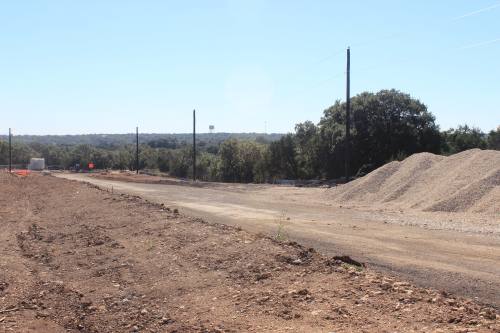1. Southwest Bypass/Wolf Ranch Parkway extension
 Southwest Bypass[/caption]
Southwest Bypass[/caption]
The project will build the Southwest Bypass and Wolf Ranch Parkway extension, which will connect Hwy. 29 at D.B. Wood Road to Leander Road. Williamson County will continue the bypass from Leander Road to I-35.
Timeline: Southwest Bypass/Wolf Ranch Parkway extension
2. FM 1460 widening
Construction continues to widen FM 1460 to a four-lane divided roadway with center median from Quail Valley Drive in Georgetown to just north of University Boulevard in Round Rock. High Tech Drive has been closed until further notice. Texstar Drive and Quail Valley Drive serve as detour routes.
Timeline: February 2016-winter 2017-18
3. Mays Street extension
The city of Georgetown broke ground on a project to extend Mays Street from Teravista Parkway and Bass Pro Drive in Round Rock to the intersection of Westinghouse and Rabbit Hill roads in Georgetown in late October.
Timeline: late October 2016-summer 2017
4. Austin Avenue/Fifth Street traffic signal
The city of Georgetown is finalizing plans to install a traffic signal at the Fifth Street and Austin Avenue intersection with sidewalk and Americans with Disabilities Act improvements.
Timeline: early 2017-spring 2017
5. University Avenue sidewalk
The city of Georgetown is building a sidewalk along University Avenue between I-35 and Scenic Drive that complies with Americans with Disabilities Act guidelines.
Timeline: October-December
Why is there a State Highway Fund shortfall?
In Texas, funding for new roads and maintenance comes from a number of sources, including fuel taxes and vehicle registration fees, according to the Texas Department of Transportation. These revenue streams make up the State Highway Fund—the fund TxDOT uses to pay for existing and new roadways.
However, because state and federal fuel taxes have not been raised since the early 1990s, revenue from these sources has remained steady while road congestion costs have increased.
Each year, Texas has a $5 billion shortfall for road maintenance and mobility improvements, according to TxDOT.
In 2014 and 2015, Texas voters approved propositions 1 and 7, respectively, measures to transfer taxes paid by oil and gas production companies and general sales tax revenue from the state into the State Highway Fund. It is estimated the measures will transfer at least $4.2 billion annually to the fund, beginning with the 2018 fiscal year.
To bridge the rest of the gap, TxDOT and state legislators are considering other revenue sources for this upcoming session, such as increasing the fuel tax or partnering with private entities.





